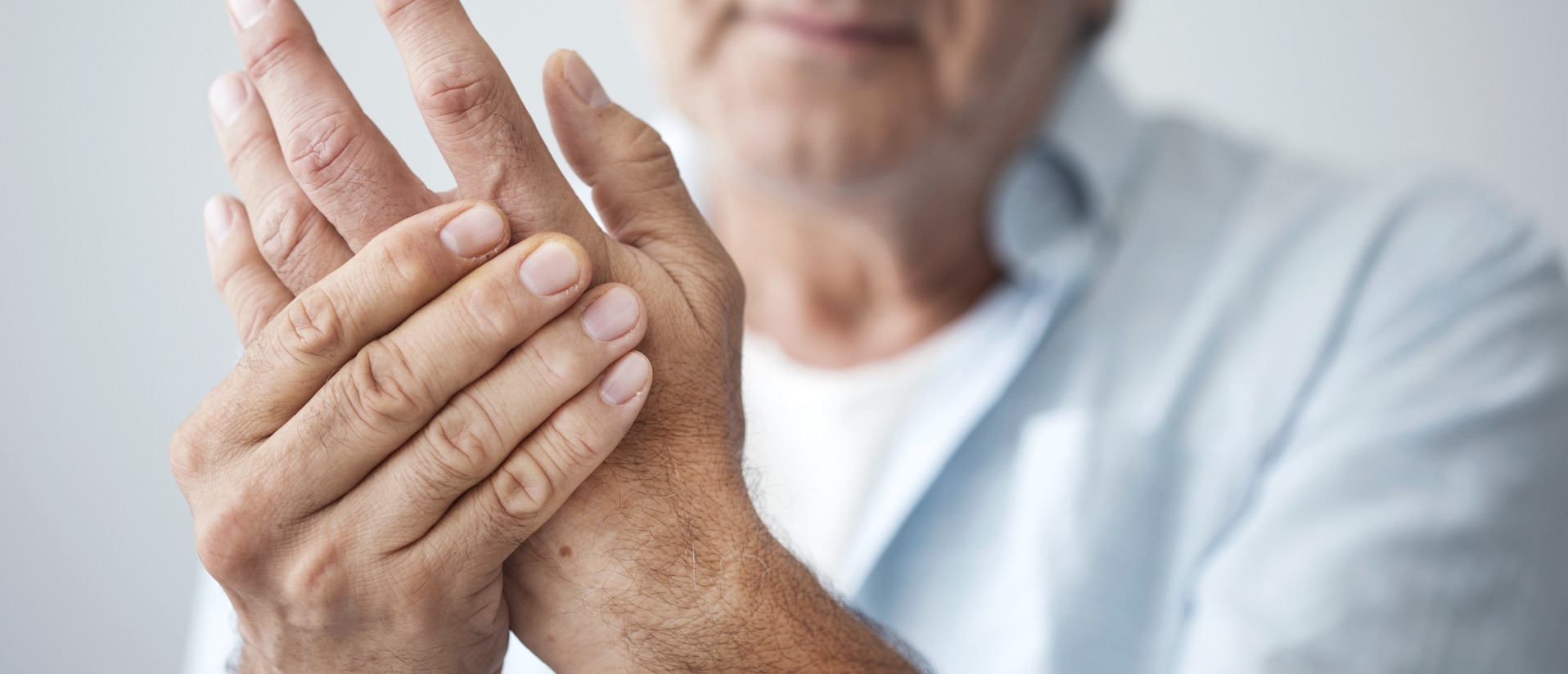Dictionary definitions don’t do it justice. Chronic pain is a complex condition that is rarely solved quickly and often requires emotional as well as physical solutions.
The pain can be anything from dull, persistent aches to sharp attacks and burning sensations in affected areas of any part of the body and to be chronic it has to last – in a steady or intermittent state – for at least 12 weeks.
Major sources of chronic pain are musculoskeletal problems, migraines and headaches, fibromyalgia, arthritis, cancer, diabetes and neurological conditions but subjective and personal elements make it difficult to establish a root cause and to measure its impact.
But its burden is clear as it disrupts a person’s physical and psychological function with devastating effect, radiating problems across family, friendship groups and employment.
Chronic pain is a major cause of disability and has the potential to infect all aspects of life. Pain Alliance Europe, an organisation covering medical experts and patient groups, estimates that 95 million people in Europe are living with chronic pain and regularly have to contend with discrimination and stigma at work and in their social lives.1
The far-reaching implications of living with chronic pain were highlighted by The Pain Proposal, an independent group of European experts, who collated research showing that sufferers endured social isolation, worried about relationships and losing their jobs and experienced a negative impact on friends and family.2
This was reinforced by a study published in the European Journal of Pain3 that recorded the impact on people living with chronic pain:
- 21% had been diagnosed with depression
- 61% were less able or unable to work outside their home
- 19% had lost their job and 13% had changed jobs
- Only 2% were being treated by a pain management specialist
- 33% were not receiving any treatment
Pain has long been viewed as a symptom rather than a condition in itself but thanks to campaigning by The European Pain Federation, which represents 20,000 healthcare practitioners and researchers, chronic primary pain has been recognised as a disease by the World Health Organisation.
Experts believe the updated status could lead to greater provision for patients, accelerating diagnoses and treatments.
Tackling pain is one of the most challenging tasks clinicians face as its cause and effect are blurred and confounded further by the stress it induces in patients. Rheumatology expert Dr Leslie J. Crofford, observed: “When you eliminate 90% of a patient’s pain, the remaining 10% is 100% of what is left. This reminds us that any pain is still pain.” She added: “When pain becomes chronic, the goal in most cases is management rather than elimination.”4
The complex tangle of physical and psychological symptoms from chronic pain leads to a significant reduction in quality of life. But there are treatments and support mechanisms that can help stabilise conditions and medicine is now addressing chronic pain as a matter of urgency.
Chronic Pain Management Techniques
Relax & Breathe
Chronic pain can cause muscle tension and spasms while feelings of lack of control over pain levels introduces extra layers of stress that only exacerbate conditions.
Relaxation techniques are vital tools to relieve the muscle and joint stress, interrupt pain signals radiating around the brain and promote a feeling of calm control.
They can take time to learn and should be used daily. But patients report less aches and pains, a release of endorphins that naturally neutralise pain and the ability to enjoy more sleep.
Relaxation should take place in quiet environments free from disturbance and deep breathing is one of the most effective ways to achieve it. The steady rhythm of breathes relax the muscles and can be deployed with visualisation exercises, such as imagining a grain of sand between your forefinger and thumb and rotating it in time with a breath cycle.
Breathing patterns change during episodes of pain, becoming shorter and shallower. Slowing the process down and concentrating on the physical aspects of a slow, gliding breath in through the nose and out through the mouth will relax the body.
It is a matter of regular practice and trial and error to find the right combinations that encourage relaxation such as introducing soothing music or having thoughts about a favourite scene or landscape.
Once established, these techniques can be deployed in public to help minimise the impact of stress from the pressures of daily life.
Treatment and Medication
Do not hesitate to seek professional help if you feel you cannot cope with the pain. There is no shame in asking for a treatment adapted to you and an expert doctor can design a therapy that takes into account your specific needs. Chronic pain can be a great deterrent in living a normal, full life and if the right medicalized treatment can help you in this direction, feel confident to ask your doctor about it.
Music Soothes Chronic Pain
The literary line ‘Music hath charms to soothe a savage breast’ is a quote from a 17th century tragedy but it has a current poignancy where pain is concerned. We all know that our moods can be enhanced, or enlivened, by music and research has demonstrated that it has a positive impact on pain from just 20 to 30-minute interventions.5
Music therapy is regularly used to treat neurological conditions because it activates the neural networks in the brain that are associated with reward and emotion. It can reduce pain perception and relieve depression to promote better control of pain.
Exercise
Taking exercise keeps your muscles, tendons and joints flexible and activity can lessen the effects of chronic pain. But it is best to check with your doctor to make sure any new exercise routine is not too strenuous and that it increases gradually to avoid injury.
The body becomes weak from lack of activity which can heighten the perception of pain so even a light fitness programme can help as it will also keep your weight down and reduce the risk of cardiovascular disease.
Exercise also releases mood-improving endorphins which neutralise pain signals and distract from their symptoms.
Improving fitness is a feelgood pursuit that dovetails with following a healthy diet.
Eat Healthily
A well-balanced diet, featuring fresh fruit and vegetables, oily fish containing Omega-3 fats and lean meat, helps control weight, improve blood-sugar levels and guards against inflammation, which can all contribute to pain levels.
The basic guideline is to follow a Mediterranean style diet and several medically-researched cookbooks are available to provide recipes and information. The strong advice is to avoid smoking completely, drastically reduce junk food intake and have alcohol in moderation only, if at all.
The European Pain Federation states that good nutrition can enhance the function of the nervous, immune and endocrine systems while losing or maintaining weight reduces the load on joints.6
Increases in fibre in your diet and making sure you drink enough water are core components of a healthy diet.
Track your Pain
Having a record of the cycles and levels of pain will provide vital information for your doctor to diagnose and prescribe therapies. It will also provide a measure of control as it identifies patterns of pain and their triggers. Pain rarely runs to a timetable or behaves with uniform levels but a pain journal – with events marked as 1 to 10 for severity – will give an identity to its rhythms and having that knowledge alone can be empowering.
Being able to accurately convey how you were feeling on different days to a doctor will also give them critical insights that are not available if patient recall is a series of vague recollections. The progression of your condition and its response to any therapies can be more accurately assessed, giving greater opportunity to control chronic pain.
Don’t be alone
Getting medical help is essential to finding a route to manage chronic pain but the support of family and friends and peers can also play a huge role in reducing the burden.
A study demonstrated that fibromyalgia patients who had a partner experienced significantly less pain than those who were alone. This is important as many people living with chronic pain feel an urge to isolate from friends and family.
Embarrassment and guilt are common emotions that drive people to reduce contact but learning about your condition and its pain so you can explain to others can be empowering. Busting myths with facts and clear information enables them to understand and makes it easier for them to offer help.
Support groups are also available in most countries and are worth seeking out as you can speak with others who have similar experience and learn coping strategies from them.
Other treatments
Acupuncture, mindfulness and massage are regular pain relief treatments but there are an increasing number of gadgets designed to stimulate nerves and disrupt pain signals. The most widely used are TENS appliances– Transcutaneous electrical nerve stimulation therapy – that were once bulky machines but now come in a range of hand-held devices.
Medical advice is still the most effective route to pain reduction but devices and alternative therapies can play a supportive role.
References:
- Pain Alliance Europe. Survey on Chronic Pain 2017: Diagnosis, treatment and impact of pain. June 2017. Accessed January 2021. https://www.pae-eu.eu/wp-content/uploads/sites/21/2017/12/PAE-Survey-on-Chronic-Pain-June-2017.pdf
- European Pain Federation. Pain Proposal. Improving the current and future management of chronic pain. Accessed January 2021. https://europeanpainfederation.eu/wp-content/uploads/sites/21/2016/06/pain_proposal.pdf
- Breivik, H., Collett, B., Ventafridda, V., Cohen, R. and Gallacher, D. Survey of chronic pain in Europe: Prevalence, impact on daily life, and treatment. European Journal of Pain. 2005;10: 287-287. doi: 10.1016/j.ejpain.2005.06.009
- Crofford LJ. Chronic Pain: Where the Body Meets the Brain. Trans Am Clin Climatol Assoc. 2015;126:167-183.
- Richard-Lalonde M, Gélinas C, Boitor M, et al. The Effect of Music on Pain in the Adult Intensive Care Unit: A Systematic Review of Randomized Controlled Trials. J Pain Symptom Manage. 2020;59(6):1304-1319.e6. doi:10.1016/j.jpainsymman.2019.12.359
- International Association for the Study of Pain. Nutrition and Chronic Pain Factsheet. Accessed January 2021. https://europeanpainfederation.eu/wp-content/uploads/sites/21/2020/03/European-Year-2020-Nutrition-and-Chronic-Pain-Fact-Sheet.pdf



